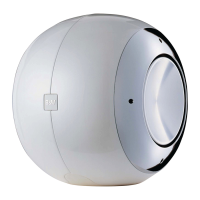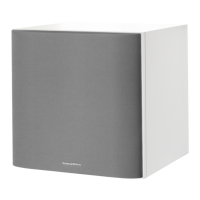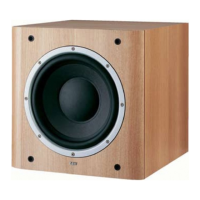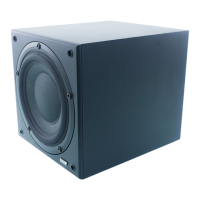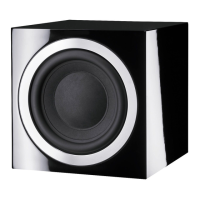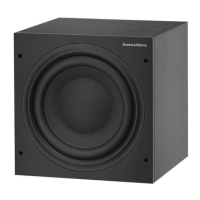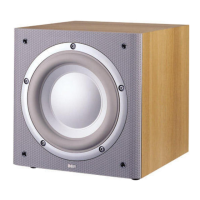14
ENGLISH
6. Conguring a Surround Processor
The PV1D may be controlled by a home automation
system running RS-232 protocol. A stereo 3.5mm
mini-jack socket is provided on the underside of the
PV1D. As this is not the standard RS-232 connection,
the installer will need to make a custom cable with the
following pin connections to the mini-jack plug:
Tip Transmit data (Tx)
Ring Receive data (Rx)
Sleeve Ground
The control codes may be downloaded from the PV1D
support page of our web site.
Once set up the PV1D should require little adjustment.
However, if it is moved within the listening room or if
large items of furniture are introduced, its Gain and
SysEQ may need adjustment. Please remember that
the PV1D is capable of volume levels that have the
potential to damage your and others’ hearing. If in any
doubt reduce the volume. If the PV1D is overloaded, its
standby indicator will ash red.
The performance of your PV1D may change subtly
during the initial listening period. If it has been stored
in a cold environment, the damping compounds and
suspension materials of the drive units will take some
time to recover their correct mechanical properties.
The drive unit suspension will also loosen up during
the rst hours of use. The time taken for the speaker to
achieve its intended performance will vary depending
on previous storage conditions and how it is used.
As a guide, allow up to a week for the temperature
effects to stabilise and 15 hours of average use for
the mechanical parts to attain their intended design
characteristics.
You may wish to reassess settings once the subwoofer
is fully run in.
The surround processor setup process involves setting
a distance for each speaker and, if ‘small’ speakers
are used, conguring the crossover that diverts very
low bass to the subwoofer. The settings recommended
in the processor instructions are generalised and not
customised for the speakers actually used.
In order to optimise the system, please use the
following settings in the processor:
Set the distance to the subwoofer 30cm (1 ft) greater
than the actual measured distance.
For ‘large’ speakers, set the distance to that actually
measured.
For ‘small’ speakers, always use the default Dolby
Digital crossover conguration with the frequency set
at 80Hz. Then, for each speaker listed, reduce the
distance from that actually measured by the value in a
look-up table.
So that the look-up table may be kept up to date, you
can nd it on the PV1D support page of our web sites.
7. Home automation 8. In use
